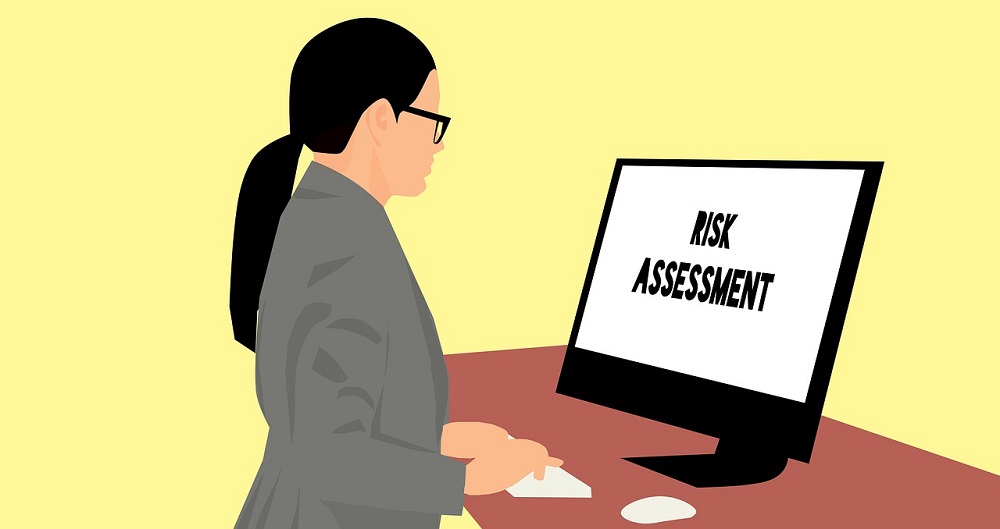Why Your Business Should Regularly Perform Risk Assessments
Risk assessments are the first step in conducting proper risk management. It is an oft-forgotten part of running a business, and many businesses tend to let it fall by the wayside. This delay leaves a company-wide open to many potential risks to grow into very real and very expensive issues.
Risks can include anything from cybersecurity vulnerabilities to a supply chain risk to reputational damages. While businesses can bounce back from several risks, larger risks can cause long-term damage to a company. In addition, even small risks can be costly and can result in short-term losses like partial client loss and a decrease in revenue.
A company can minimize the number of issues that it faces by conducting regular risk assessments. Read on to see what exactly a risk assessment is, and why they’re so important.
What Are Risk Assessments?
Risk assessments are thorough analyses of a company’s activities, parties it’s involved with, its clientele, its cybersecurity measures and much more. Essentially, every aspect of a company is looked over with a fine-toothed comb, with the intention of uncovering any and all potential issues that can cause damage.
The risks that a risk assessment is meant to uncover are broad; they are not limited to any one corner of the business’s operations. Due to how much information is reviewed during a risk assessment, it can be a very long and laborious process - one of the many reasons many businesses opt not to do it.
Risk Assessments Uncover All Potential Issues
The main goal of risk assessments is to detect all possible risks across the board that can affect a company. This means that these assessments can uncover anything from vulnerabilities in the company’s website or online processes, to supply chains that are slowly raising their prices, to more clients leaving bad reviews online, and anything in between.
While many of these issues may seem small on their own, over time they can grow to become larger issues that require immediate attention. To use the above examples, website vulnerabilities can lead to hacking, paying more for the same products and services can result in being over budget, and too many bad reviews can lead to a decrease in new clientele. Risk assessments can give the business the ability to resolve issues while they’re still small.
Risks Can Result in Expensive Problems
Risks can be very expensive to repair. Whether it’s investing more time in replacing lost clients or seeking out new vendors well after your company began paying exorbitant prices, waiting until a small risk turns into a big risk, a company can end up needlessly spending money.
One of the most expensive risks is one that affect clients and your company’s income. Losing clients or experiencing a slowdown in client acquisition can negatively affect every aspect of your business. A decrease in income can lead to downsizing, and closed branches and can ultimately force your company to restructure if losses can’t be recouped.
By keeping a running record of your company’s potential risks, your company will be able to prevent clientele loss as well as other expensive issues before they happen.
Risks Can Grow Into Long-Term Issues
Risks don’t just harm your company in the moment; they can cause ripple effects that can be felt for weeks, months, or even years to come. They rarely impact just one department too. Risks that deal large blows to a company will impact every single department, from top to bottom.
Some of these major, company-wide risks can include hackings, data leaks, an influx of negative reviews, or vendor shutdowns. These and similar risks can all result in lost clientele, lost income, a damaged reputation, a slowdown in productivity and delayed product delivery. As mentioned above, these issues can take a long while to recover from and are often costly. And during the interim, while these large issues are being resolved, your company may struggle to tread water.
Risks Are Resolved Quickly and Efficiently
Major risks that are found during risk assessments can be handled as soon as they’re uncovered. By having this information, your team can determine which risks need to be dealt with quickly, and which ones can be simply monitored, only to be resolved if they become bigger issues.
A big aspect of risk management is knowing which risks require immediate attention, and which don’t. One pitfall that companies new to risk management fall into is assuming that every last risk that a risk assessment uncovers needs to be fixed. This isn’t always the case. The risk assessment team, while conducting their risk assessment, should be making notes of what kind of risk the risk is - such as reputational or financial - as well as the severity of the risk.
These indicators help companies determine which risks are more likely to become larger issues, and which ones only have a small possibility of actually occurring. The easiest way to do this is by using risk assessment software. This software can make the risk management process far easier by not only automating risk assessments but also assigning categories and risk levels to each risk. These notes can help a business narrow down which risks require their attention, and which ones can be simply checked every so often.
However, it’s important that companies remember to continue to monitor their low-priority risks as well. These risks, despite having a small threat level, still need to be reviewed. By keeping an eye on low-priority risks, companies will be able to see when and if these smaller risks start to grow into larger problems. With this in mind, companies should schedule regular risk assessments to keep their risk register up to date.
Overall, when it comes to risk management, it’s best to be thorough. No company is immune from risks, and the longer they go undetected, they can fester into much larger and pricier problems. By preventing issues before they have a chance to snowball, your company can save money, clientele, employees, and its own reputation.












